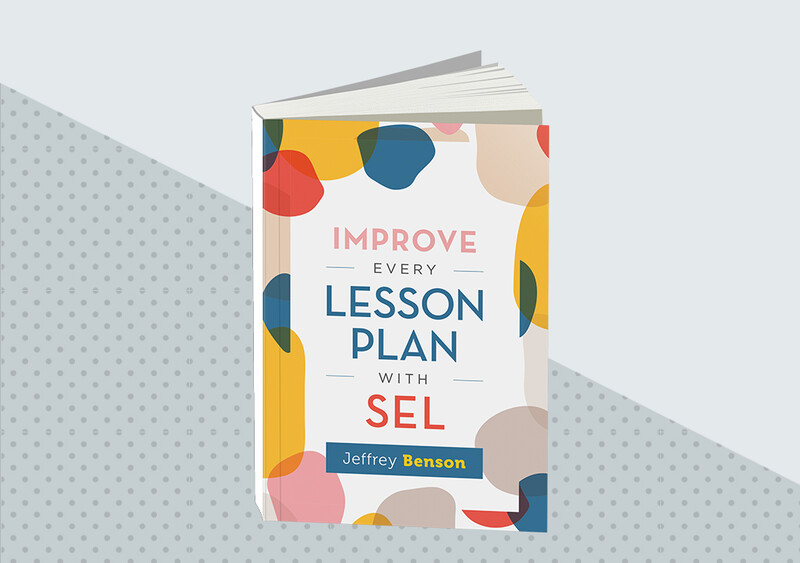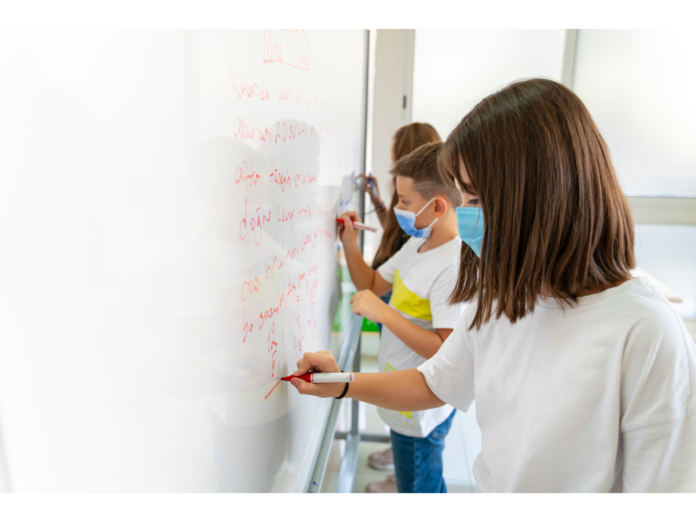Most adults I know have an implicit SEL curriculum for the young people in the world. In families, the implicit SEL curriculum gets played out in stories shared during holidays or around the dinner table, in random warnings and encouragement about standards of behavior, and in the praise we convey when young people independently do the right thing as members of the family or the community.
In schools as well, students receive many implicit and random messages throughout the year to use their social-emotional skills. But the impact of those messages gets diminished by how inconsistently they are delivered, in the midst of all the other required curriculum messages we reinforce. Students will hear far more often how important it is to keep their columns straight when writing equations, or to use complete sentences, or to make sure they put the date on top of their paper, than they will be reminded and praised for advocating for what they need.
Imagine how much our students would build up their social-emotional skills if we explicitly and intentionally reminded and praised them for using a small number of those skills, day after day after day, while we taught the standard curriculum.
That approach is the basis for Improve Every Lesson Plan with SEL, my new book from ASCD (as well as this Quick Reference Guide). The objective is to identify a small number of social-emotional skills you want your students to develop, and reinforce them explicitly and intentionally as the lessons unfold.
For instance, I always want my students to advocate for what they need. I am not good at reading their minds, and I don’t want them to be passively waiting for me to notice that they are out of strategies. Helping them be lifelong learners doesn’t mean that they are lifelong followers; I want them robustly taking care of themselves. Also, I have so much to take care of in every lesson so the more ownership students take in the workings of the class, the more I can keep the momentum of learning going for the group.
First Steps
I’ll start the year by saying, “One of the things you are going to learn this year is how to be self-advocates, how to get what you need from me, from your peers, and from all our resources so you can be successful. Let’s talk for a minute about what that looks and sounds like.” By making this goal explicit and intentional, I am also committing myself to stay with the program.
Now I can prompt and praise students throughout every part of the lesson to be self-advocates. At the beginning of the lesson, either as they transition from task to task in elementary school, or settle into their seats in secondary school, I might say, “Before we dive into the work, is there something you need to do to be ready for working? You may need to sharpen a pencil, clean your glasses, stretch your legs, get a drink of water, or tell me something (and I can come over to your seat if that needs to be in private). In the next 30 seconds, your job is to advocate for what you need. Go for it.”
When the 30 seconds are up, I may quickly reinforce their efforts: “I saw some people clear their desks. Some of you stretched. A couple of people put their heads down and closed their eyes. Most of you heard someone ask me if they could move their seat closer to the front. That’s how we roll in this class! Well done.”
Next Steps
During the direct instruction part of the lesson, if a student asks a clarifying question, I can add this to my response: “Love that you asked a question to make sure you understood. That’s how we advocate for ourselves as a student. Make sure you understand.”
As the students are about to begin independent or small group work, exploring and experimenting with ideas, I remind them: “Don’t forget to take care of yourself as a learner. You know where to get extra markers if you need them. You can put on headphones if that helps you concentrate. If you get stuck, you can ask a peer nearby, and if neither of you know what to do next, call me over. Does anyone need anything before you head into explorations?”
I can do the same prompting, reinforcing, and praising when students use words to identify their feelings, or for problem-solving with a peer, or for being socially responsible by helping someone pick up books that fell.
I suggest starting small: pick one or two social-emotional skills that will help your students develop as members of the community. In the lesson plan, note where you can prompt students to use these skills. Each time you prompt, reinforce, and praise, more students will pick up on your cues and begin to exercise those skills. You will have triggered a virtuous cycle of learning, and it won’t feel like work. Crucially, it won’t be another curriculum!
Improve Every Lesson Plan with SEL
In his new book, Jeffrey Benson shares step-by-step guidance on how to incorporate social and emotional learning into K–12 lesson planning—without imposing a separate SEL curriculum.

Jeffrey Benson has more than 40 years of experience as a teacher, mentor, and school administrator, with a focus on supporting schools that can work for all students. His books include Improve Every Lesson Plan with SEL, Hanging In: Strategies for Working with the Students Who Challenge Us Most, and 10 Steps for Managing Change in Schools: How do we take initiatives from goals to actions? His website is JeffreyBenson.org.








